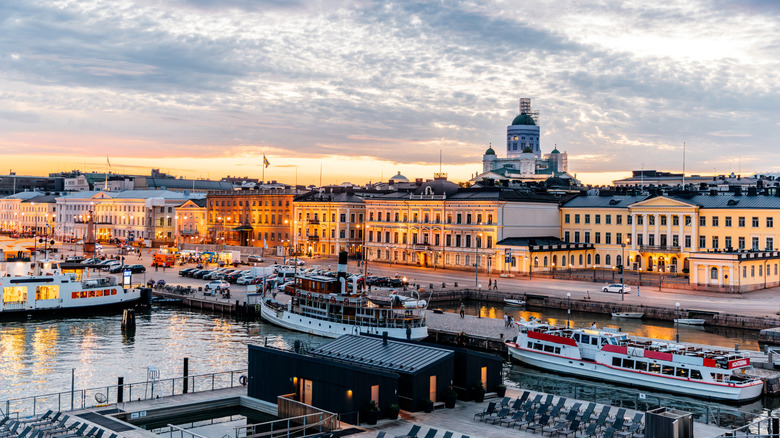In the U.S., far too many people consider road deaths a natural, unavoidable part of life. A country singer runs an elderly woman over in a crosswalk with his truck? Oh well. Can’t do anything about that or even hold him accountable for the life he took. That’s not the case in other countries, though. In fact, the U.S. is the only developed country in the world where roads have gotten more dangerous in recent years, not less. Finland, for example, just went an entire year without a single road death in the capital city of Helsinki, Finland’s YLE reports.
So what’s the secret to keeping people from dying on Helsinki’s roads? It isn’t anything fantastical, such as genetically engineering human bodies that can survive being run over by a Child Crusher 9000. Instead, it’s a bunch of stuff that we already know works but Americans collectively hate, like lower speed limits, smarter road design, and quality public transportation. At its core, though, it’s the result of a city actually valuing human lives and no longer treating the people drivers kill like acceptable sacrifices. Which means the only thing stopping U.S. cities from doing the same is callous indifference to the lives taken on our roads every year.
Helsinki’s policy changes haven’t just saved lives, either. With more than 1.5 million people living in the metro area, the city also cut down significantly on the number of injury-causing crashes that occur. Over the last year, Helsinki saw only 277 crashes with injuries, far below the roughly 1,000 or so it saw in the 1980s, a time when road deaths regularly took about 30 lives a year.
How did Helsinki do it?
Like essentially every big problem, Helsinki didn’t eliminate road deaths with some mythical silver bullet that magically fixed everything at once. Instead, the city took a multi-pronged approach that attacked the issue from multiple angles. Still, there’s no getting around the fact that a big part of its success has come from prioritizing safety over making sure every driver can get wherever they want to go, as fast as physically possible. Which meant lowering speed limits in many parts of the city from 50 kmh to 30 kmh. As Roni Utriainen, a traffic engineer with Helsinki’s Urban Environment Division, told YLE, “A lot of factors contributed to this, but speed limits are one of the most important.”
The city also committed to building safer streets, significantly improving its pedestrian and bicycle infrastructure, while also investing in safer crosswalks and better design at intersection. It also upped its traffic enforcement and added more traffic cameras to discourage dangerous driving. Plus, it made sure its public transportation system was fast and useful enough that residents can easily live without owning cars. That has, in turn, made the roads safer. “Public transport in Helsinki is excellent, which reduces car use, and with it, the number of serious accidents,” Utriainen told YLE.
Those improvements didn’t happen overnight, but there’s also no reason U.S. cities couldn’t follow Helsinki’s lead. Or at least there wouldn’t be if so many people in the U.S. weren’t happy to watch some 40,000 people die every year, just so they can continue driving everywhere all the time as fast as possible.




